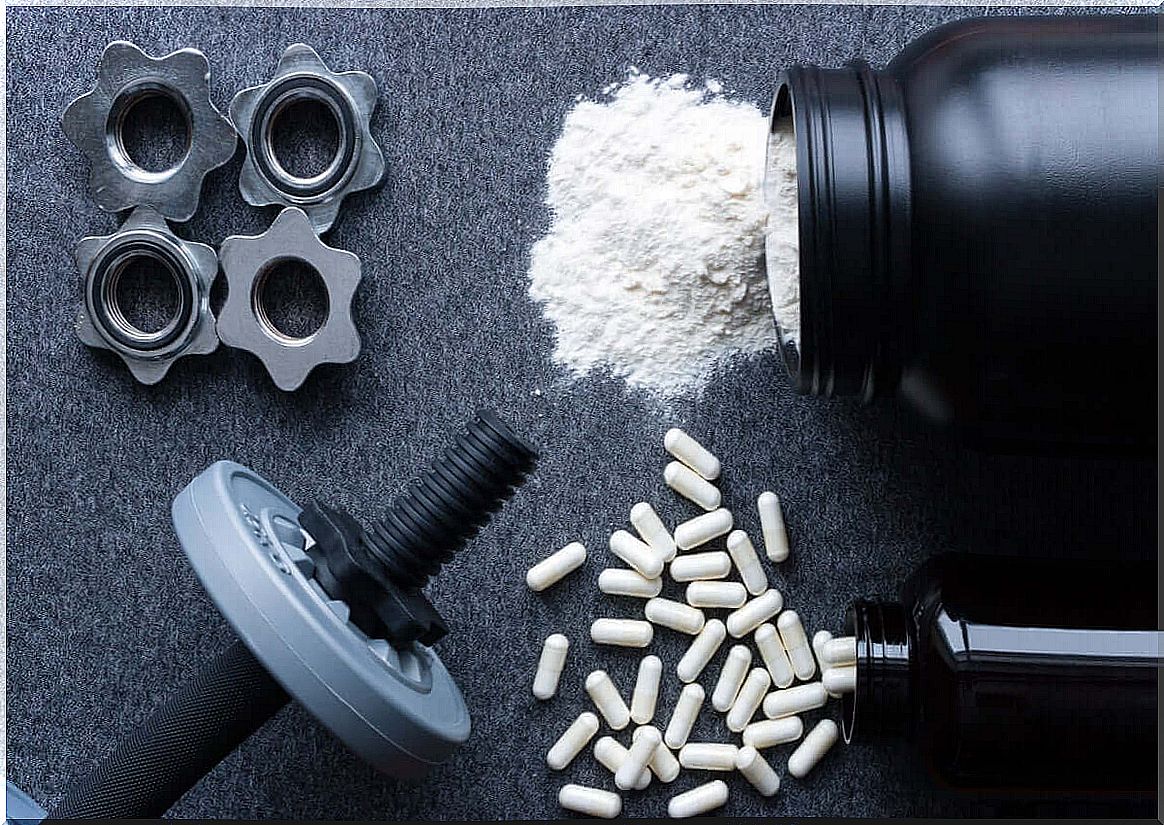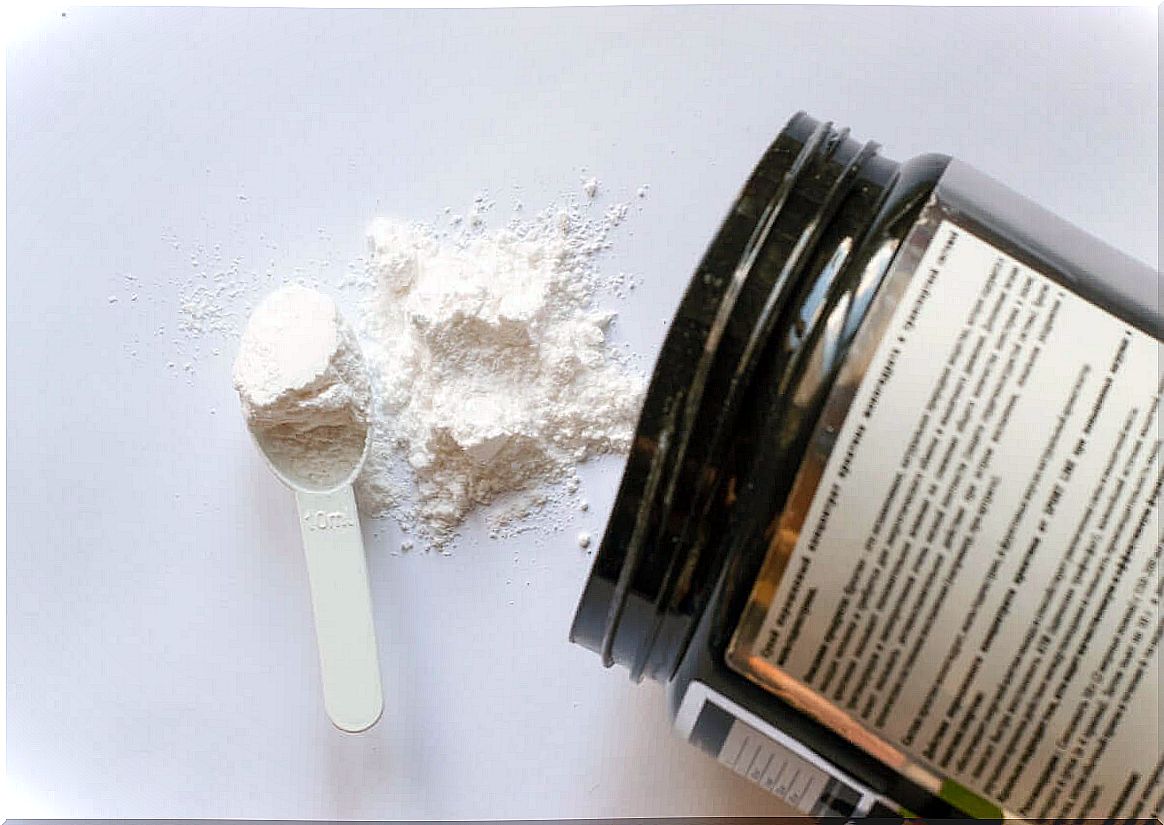Creatine: Types, Properties And Uses
Creatine is one of the most widely used nutritional supplements by athletes around the world. In this article, we explain the types of creatine, their properties and uses. Continue reading!

People all over the world train as a hobby or for professional reasons. That is why there are many products that improve athletic performance. One of the most popular of these is creatine. Then find out what types there are and how it is used.
Creatine is a non-protein nitrogen compound. It is among others in the muscles before . But it is also present to a lesser extent in the brain. The main dietary sources are red meat and seafood.
The main function of this substance has to do with the synthesis of ATP. It provides energy during metabolism and subsequently improves athletic performance. Not only that, it is also used to treat some brain disorders as well as heart failure.
Species and their respective characteristics
Creatine is an excellent dietary supplement. Therefore, different types have been developed over the years. Each has a different chemical composition for better effects. Below is a list of the different types:
Creatine monohydrate
This is the most popular dietary supplement among athletes. But it is also the purest form. This means that the other types can be derived from it. It’s very effective too ! It has been shown to improve various aspects of fitness training, such as speed and peak performance.
The compound does not usually contain any additives. Creatine monohydrate consists of 88% creatine, the remaining 12% is water. It has the ability to hydrate cells. It also reduces cell damage and also increases intramuscular storage capacity.

Creatine hydrochloride
There are few studies of this newer form of creatine. Mixing it with hydrochloric acid creates a stable molecule that is up to 38 times more soluble than creatine monohydrate. This makes it easier for the body to absorb, and kidney damage is less likely. The effect is the same, however.
Creatine gluconate
This dietary supplement consists of a creatine molecule combined with a glucose molecule . This speeds up intestinal absorption. It is also transported in the bloodstream in a more effective way. It also penetrates the muscles more easily than creatine monohydrate. This can be explained by the fact that glucose produces a short-term insulin peak.
Creatine phosphate (or phosphocreatine)
Phosphocreatine or creatine phosphate is a chemical compound. This occurs in the body and has a high energy value. However, very little of it is stored in the body. Hence, it is one of the most sought after types. It consists of creatine and phosphate in a ratio of 62:38.
It has the same functions as creatine monohydrate. That said, it’s perfect for building lean tissue. As it is an additional source of energy, it prevents fatigue during exercise.
Kre-alkalyn creatine
This form of creatine is also known as alkaline or buffered creatine. This is a mixture of creatine monohydrate and alkalizing powders. This mixture was developed because it has a higher pH. This improves absorption. Furthermore, the formation of creatinine is prevented. This in turn reduces the risk of kidney damage.
For a long time it was believed that Kre-Alkalyn-Creatine gave better results than monohydrate. However, a recent study has shown that there are no significant differences in effectiveness.
Creatine malate
This compound is a mixture of two to three creatine molecules and malic acid. This makes it more soluble and easier to absorb. It also improves the endurance, sprinting ability and strength of an athlete. However, the blood pressure or the fat values are not affected.
Creatine Ethyl Ester
Creatine ethyl ester is nothing more than creatine monohydrate. It is esterified with alcohol, methanol or ethanol . This esterification facilitates the passage of the compound across the muscle cell membranes. This will allow it to be absorbed faster and lower doses will suffice.
Creatine citrate
This is a mixture of 40% creatine and citric acid. That makes it the most soluble compound of all. It also generates a lot of muscle energy thanks to the citric acid it contains. Since it is very soluble, it does not cause stomach problems. However, it is more expensive than other varieties.
Use and safety of the various types
High-performance athletes use creatine because it improves their speed, endurance, and strength. In fact, experts recommend its use in sports such as rowing, high jump, and soccer. Because its effectiveness has been proven several times.
On the other hand, creatine preparations can improve creatine deficiency syndromes (CCDS), congenital malfunctions of the creatine metabolism. For example, the body is then unable to produce creatine itself. Although there isn’t enough scientific evidence, doctors also prescribe it for cases of heart failure.
In principle, it is safe to consume the different types. However, you should only take it for a short time and in a maximum dose of five grams. And you should consult a doctor before you start taking it.
Possible benefits
The different types of creatine have become the preferred tools for athletes . That’s because they all offer the same benefits when exercising. The following stand out:
- Providing energy for the muscle fibers
- Increase in muscle volume and facilitate muscle recovery
- Avoidance of tiredness and fatigue
- Delay skin aging
The big difference between the creatine compounds is their solubility. The more soluble ones are absorbed faster. A lower dose is therefore usually sufficient.

Contraindications to use
One of the most famous side effects is possible kidney damage. You should be very careful in taking it if you already have a kidney problem or are at risk of developing one.
On the other hand, you should avoid consuming it with nephrotoxic drugs. These are drugs that can affect kidney function. Taking both substances at the same time can increase the risk of damage to the kidneys.
Another contraindication to ingestion is related to caffeine consumption. You shouldn’t take the substances at the same time. Their interaction reduces the amino acid’s effect on muscles.
The main differences of the different types
As we explained in the article, the different types of creatine are very similar. They all have the same effect on the muscles. There isn’t enough scientific evidence that one type is more effective than another.
The main differences are solubility and the side effects they cause. In general, the creatine monohydrate derivatives are more soluble and cause fewer stomach problems. However, you should always seek medical advice before you start taking it.









